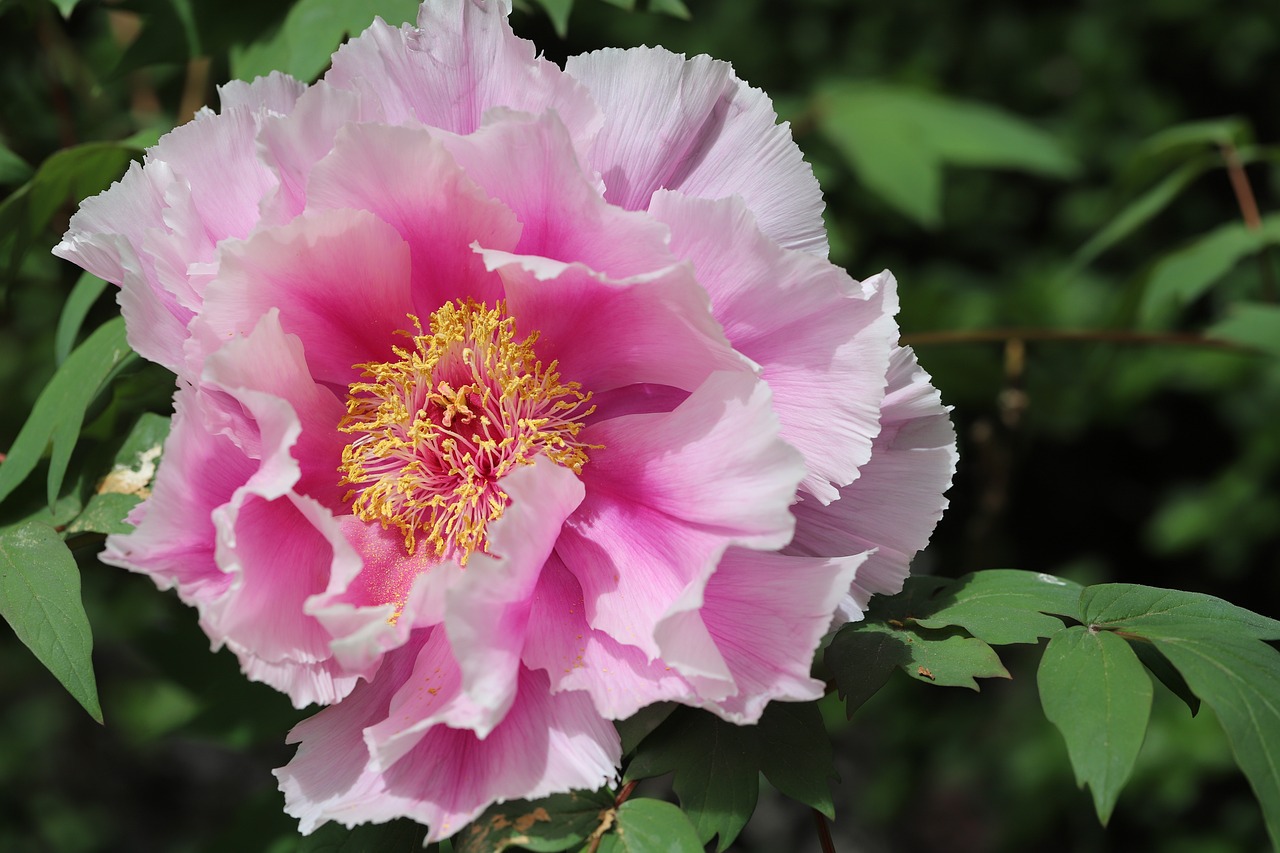If you’re looking to expand your peony collection or share these stunning flowers with friends and family, this guide will provide you with the essential information on propagating peonies successfully.
Understanding Peony Cuttings
Peonies can be propagated from both stem cuttings and root cuttings, with varying degrees of success. Stem cuttings are usually taken in the spring when the plants begin to actively grow. Root cuttings can be taken in the fall when the plant is dormant. Each method has its advantages, but we will focus primarily on stem cuttings in the following section of this guide.
Best Time to Take Cuttings
For stem cuttings, the best time is during the late spring to early summer, typically around May to June, when the peony shoots are robust and not yet fully mature. For root cuttings, late fall after the plant has gone dormant is the ideal time.
Tools You’ll Need
To successfully propagate peonies from cuttings, gather the following tools:
Sharp, sterilized pruning shears
Clean, small pots or seed trays
Well-draining potting mix (a mix of potting soil, perlite, and sand works well)
Clear plastic bags or plastic wrap
Watering can or spray bottle
Labels (optional)
Steps to Propagate Peonies from Stem Cuttings
Select Healthy Parent Plants: Choose a healthy peony plant as your source for cuttings. Look for vigorous stems without any signs of disease or pests. Ideally, select stems that are fresh and green, as these are more likely to root successfully.
Take Cuttings: Using clean and sharp pruning shears, cut 4 to 6-inch sections from the tips of the stems, ensuring each cutting has at least one to two sets of leaves. Make your cuts just below a leaf node, as roots will usually develop best from these areas.
Prepare the Cuttings: Remove any lower leaves from the cuttings, leaving just a few leaves at the top. Removing excess foliage helps the cutting focus its energy on root development rather than sustaining leaves.
Apply Rooting Hormone (Optional): To encourage rooting, you can dip the cut end of your stem cuttings in rooting hormone. While not necessary, this can improve your chances of success.
Plant the Cuttings: Fill your pots or trays with the well-draining potting mix, creating holes for the cuttings. Place the cuttings into the soil, ensuring that at least 1-2 inches of the stem is buried. Firm the soil around the cuttings to ensure good soil contact.
Water and Cover: Water the cuttings gently to settle the soil, ensuring not to saturate it. To create a humid environment that encourages rooting, cover the pots or trays with clear plastic bags or plastic wrap, making sure there is some ventilation to prevent mold growth.
Provide the Right Conditions: Place your covered cuttings in a bright location with indirect sunlight. Avoid direct sun exposure, as this can cause overheating. Maintain the humidity by misting the cuttings occasionally, and check the soil moisture—keep it slightly moist but not soggy.
Wait for Roots to Develop: It typically takes several weeks for peony cuttings to develop roots. You can gently tug on the cuttings after a few weeks to check for resistance, which indicates root growth. Once established, you can gradually acclimate them to normal conditions by removing the plastic cover for increasing durations.
Transplanting: After your cuttings have developed a strong root system, usually around the fall or the following spring, you can transplant them into your garden or larger pots. Choose a location with well-drained soil and good sunlight for optimal growth.
Steps to Propagate Peonies from Root Cuttings
Select Roots: Choose a healthy peony plant in the fall when they are dormant. Look for thick, healthy roots.
Take Root Cuttings: Carefully dig around the plant and cut a section of root about 4-6 inches long. Make sure to take only healthy roots to avoid introducing disease.
Prepare for Planting: Cut the root section into smaller pieces, each with at least one or two buds.
Plant the Root Cuttings: Plant the root cuttings horizontally or upright in well-draining potting mix. Cover them lightly with soil.
Water and Care: Water the soil to settle it, and continue to keep it slightly moist through the winter. Ne6. Transplanting:
Once your new plants are a couple of inches tall and have developed a few sets of leaves, it’s time to transplant them to larger pots or directly into your garden. Make sure to choose a spot with rich, well-drained soil and adequate sunlight, as peonies thrive in these conditions. When transitioning them outdoors, you should follow the same acclimation process as with stem cuttings—gradually exposing them to outdoor conditions over a week or two to reduce transplant shock.
Tips for Success

Be Patient: Whether you’re propagating from cuttings or roots, patience is essential. Peonies often take time to establish themselves and may require a year or more before they start blooming.
Monitor for Pests: Keep an eye on your cuttings, as they can be susceptible to pests like aphids or diseases. Early intervention can prevent these issues from affecting your new plants.
Avoid Overwatering: Ensure good drainage and avoid waterlogging your cuttings, which can lead to rot. Make sure your pots have drainage holes and that you’re using an appropriate potting mix.
Label Your Cuttings: If you’re propagating different varieties of peonies, consider labeling your cuttings to keep track of them as they grow.
Other Methods of Peony Propagation
Peonies can be propagated in several ways, including division, tissue culture, and seed propagation. However, the most common and effective methods for home gardeners are division and root cuttings.
Division: This method involves separating the plants into smaller sections, ensuring that each section can grow independently.
Seed Propagation: Although this is a less common technique due to the extended time it takes for seeds to mature into blooming plants, it can be an interesting project for those looking to experiment with growing peonies from scratch.
Tools You’ll Need
Before you start, gather the following tools:
Sharp garden spade or shovel
Pruning shears
A garden fork
A bucket or a wheelbarrow (for transporting divisions)
Compost or well-rotted manure (to enrich your soil)
Steps to Propagate Peonies by Division
Select the Right Plant: Choose a healthy peony plant that is at least three to five years old. This age ensures that there are enough stems and roots for successful division.
Prepare the Area: Clear the area around the plant to provide ample space for digging. Water the plant a few days before division to ensure the soil is moist but not soggy.
Digging Up the Plant: Carefully dig around the base of the peony, maintaining a distance of about 12 inches from the main stem to avoid damaging the roots. Gently lift the plant from the soil, being mindful of the root system.
Divide the Roots: Use your garden fork or spade to separate the roots into sections. Each division should have at least three to five eyes (the buds from which new growth will emerge). Avoid taking divisions that appear weak or have no eyes.
Replanting: Prepare the new planting sites by enriching the soil with compost. Plant the divisions at the same depth they were previously growing, ensuring that the eyes are positioned about 1-2 inches below the soil surface. Water thoroughly after planting to settle the soil.
Care and Maintenance: During the first season, keep the newly planted divisions well-watered, especially during dry spells. Avoid applying fertilizer until the following spring, giving the plants time to establish their root systems.
Growing Peonies from Seeds
If you’re feeling adventurous, growing peonies from seeds can be a fun project. However, keep in mind it can take several years before you see blooms. Here’s a quick overview of the seed propagation process:
Collect Seeds: After peonies bloom and the flowers fade, seed pods will develop. Once the pods start to dry and change color, collect the seeds.
Stratification: Peony seeds require a period of cold stratification to germinate. Place the seeds in a damp paper towel, seal them in a plastic bag, and refrigerate for about 12-14 weeks.
Planting Seeds: After stratification, plant the seeds in rich, well-drained soil, burying them about 1 inch deep. Keep the soil moist but not soggy.
Patience is Key: Seeds may take anywhere from 30 days to several months to germinate depending on conditions. Once seedlings appear, provide them with ample sunlight and continue to care for them as they grow.
Conclusion
Propagating peonies can be a delightful and satisfying project for any gardener. Whether you choose to divide established plants or experiment with seeds, you’re sure to enjoy the process and, ultimately, the stunning blooms that result from your hard work. With a little patience and the right care, your garden can flourish with an array of beautiful peonies





